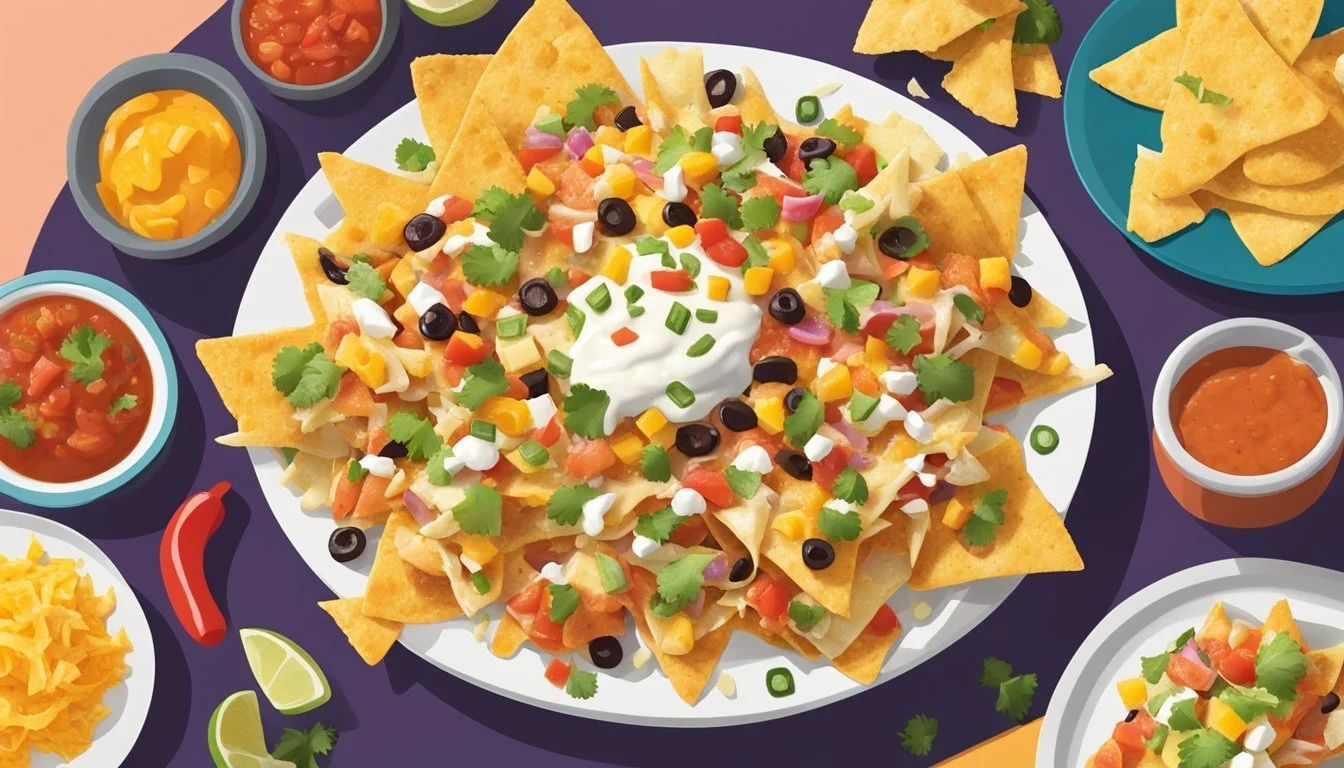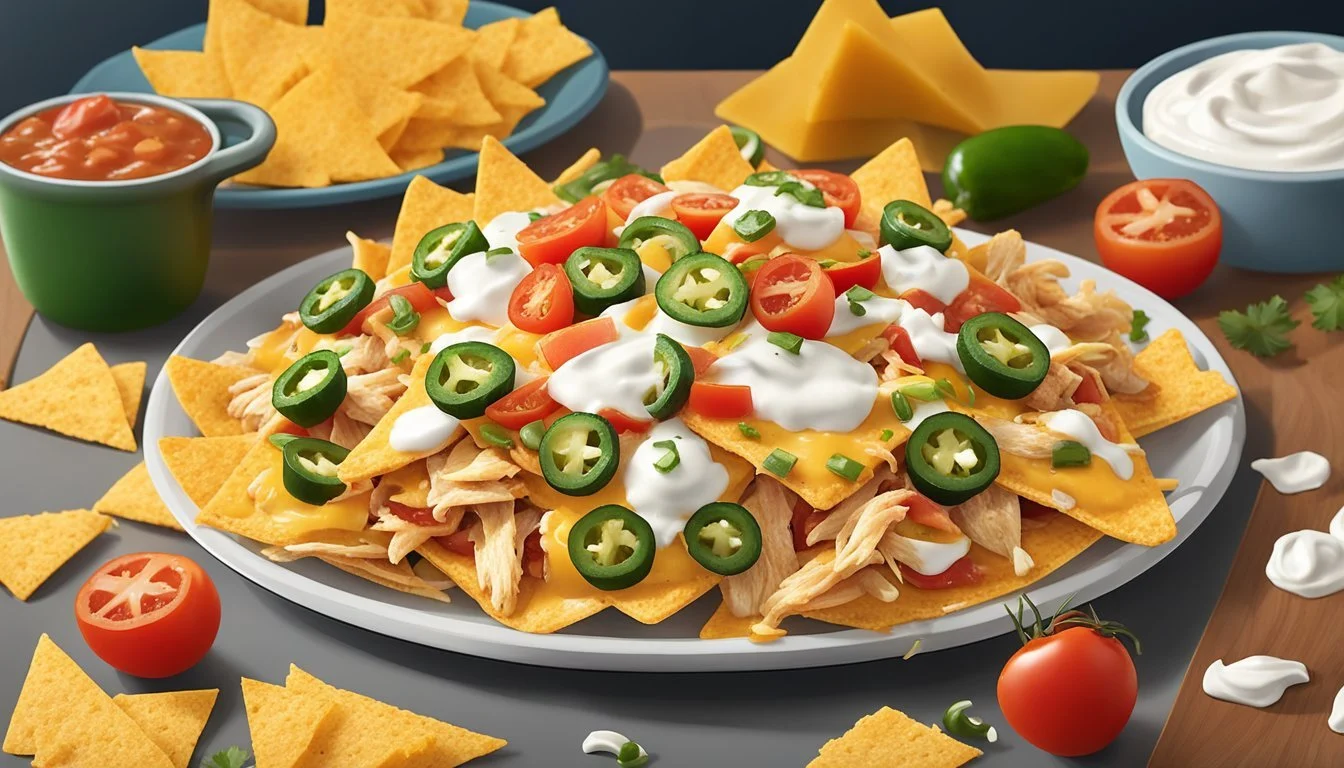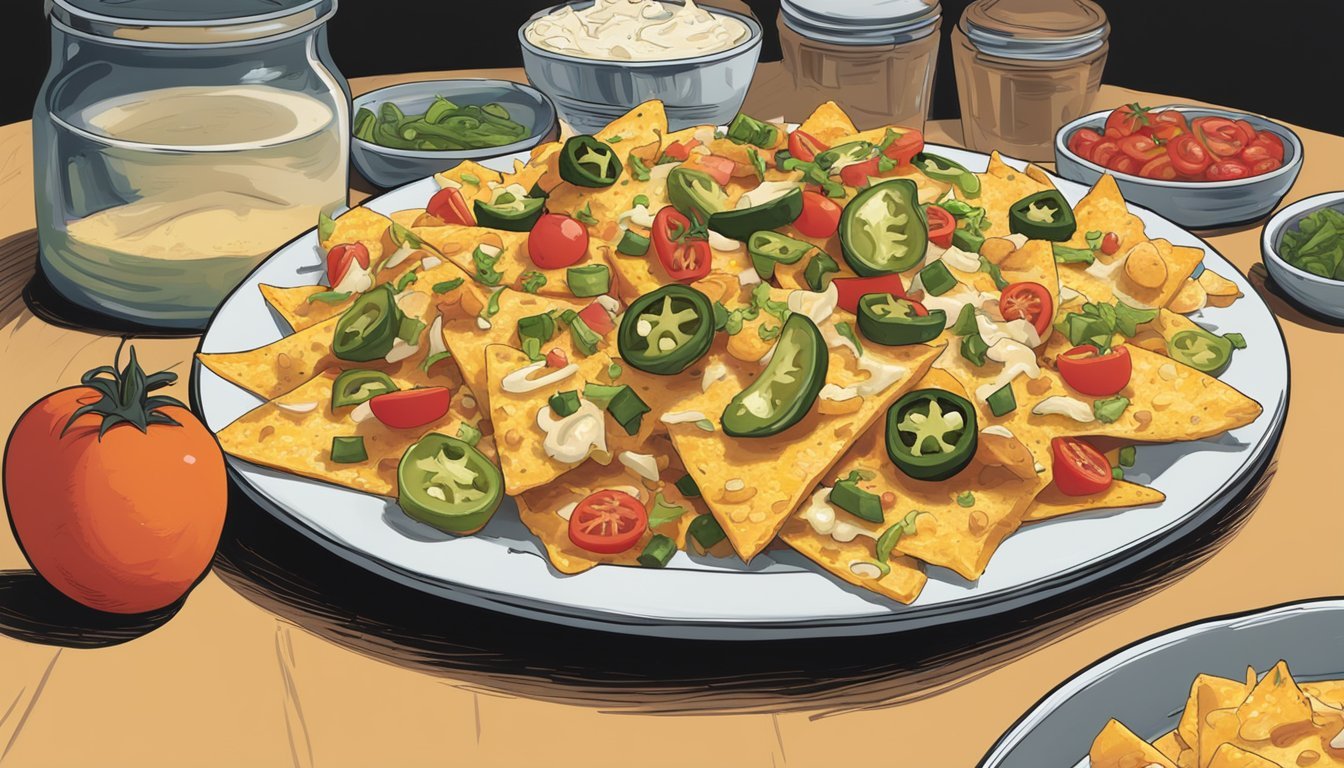How Long Do Chicken Nachos Last?
Tips for Maximum Freshness
Chicken nachos are a quick and delicious appetizer that can satisfy cravings in no time. Made using simple ingredients like cooked chicken, tortilla chips, cheese, and various toppings, they can easily be prepared in an oven. Chicken nachos can typically last for about 3-4 days in the refrigerator when stored properly in an airtight container.
One key to maintaining the quality of chicken nachos is to keep them fresh. Store-bought or homemade, once prepared, these appetizers should be enjoyed as soon as possible to make the most of their flavors and textures. Storing them beyond the recommended time can result in soggy chips and a less appetizing dish.
For those looking to meal prep or save leftovers, reheating chicken nachos in the oven rather than the microwave helps retain the crispiness of the chips. When done right, this method can bring your nachos back to life, making them almost as good as when they were first made.
Understanding Chicken Nachos
Chicken nachos combine crispy tortilla chips with savory chicken, melted cheese, and various toppings for a dish that's both satisfying and versatile. The details below will discuss essential components, traditional and modern variations, and nutritional information.
Essential Components and Variations
The basic ingredients for chicken nachos include tortilla chips, shredded chicken, and cheese like cheddar or Monterey Jack.
Popular toppings include salsa, guacamole, sour cream, jalapeños, olives, onions, tomatoes, cilantro, and lime. Avocado and black beans add extra texture and flavor.
Spices such as cumin, chili powder, oregano, salt, and pepper enhance the chicken, which can be cooked in a variety of ways, including rotisserie or grilled.
For cheesy richness, use a combination of shredded cheese and salsa con queso.
Traditional vs. Modern Takes
Traditional chicken nachos focus on simple ingredients: tortilla chips, seasoned chicken, and classic toppings like jalapeños, onion, and cheddar cheese.
Modern versions include loaded chicken nachos, which pile on additional toppings like pico de gallo, homemade queso, and even unconventional ingredients like barbecue sauce or spicy lime crema.
Sheet pan nachos have become popular for their convenience, allowing for easy layering and baking. This method is popular for gatherings like Super Bowl parties, where quick preparation and large quantity serving are priorities.
Nutrition Information
The nutritional content of chicken nachos varies based on ingredients and portion sizes. A typical serving size includes tortilla chips (rich in carbs), chicken (high in protein), and cheese (rich in fats and calcium).
Toppings like black beans and avocado provide added fiber and healthy fats, while salsa and vegetables contribute vitamins and minerals.
To make a healthier version, opt for baked tortilla chips, lean chicken, and reduced-fat cheese. Limiting high-calorie toppings like sour cream and excessive cheese can also make the dish more health-conscious without sacrificing flavor.
Storage Basics
Proper storage of chicken nachos ensures they remain fresh and safe to eat. Key points include refrigeration techniques, freezing and thawing methods, and understanding their shelf life.
Optimal Refrigeration Techniques
When storing chicken nachos in the fridge, it is essential to use an airtight container. This will help maintain freshness and prevent odors from seeping in. Refrigerate leftovers within two hours of cooking to minimize bacterial growth. Wrap in aluminum foil can also be used to keep moisture in and prevent the nachos from becoming soggy. Generally, chicken nachos can last in the fridge for up to 3-4 days if stored properly.
Freezing and Thawing
For longer storage, freezing chicken nachos is an effective method. Place the nachos in a freezer-safe, airtight container or wrap them tightly in aluminum foil before placing them in a freezer bag. This helps prevent freezer burn and maintain quality. When ready to eat, thaw the nachos in the fridge overnight. For best results, reheat the thawed nachos in the oven to preserve texture and flavor.
Shelf Life Considerations
The shelf life of chicken nachos depends on several factors, including storage method and ingredient freshness. Refrigerated nachos typically last 3-4 days, while frozen nachos can last up to 2-3 months. Always check for signs of spoilage, such as off smells or discoloration, before consuming leftovers. Keeping leftovers in an airtight container significantly helps in maintaining their freshness and safety for future consumption.
Preparation Tips for Longevity
Optimal preparation techniques and careful ingredient selection can help extend the freshness and flavor of chicken nachos.
Baking Techniques and Time
Start by preheating the oven to 375°F. Arrange the chips in a single layer on a baking sheet, ensuring even spacing for uniform cooking. Spread shredded chicken or chunks of rotisserie chicken on top.
Sprinkle taco seasoning evenly over chicken pieces. Drizzle with a small amount of olive oil and chicken broth to keep the meat moist. Bake for 10-12 minutes, monitoring to prevent overcooking. Proper baking ensures the nachos remain crisp while keeping the toppings well-cooked and fresh.
Ingredient Selection for Preservation
Choose boneless, skinless chicken breasts or thighs for optimal flavor and longevity. Shred or slice the cooked chicken, distributing it evenly across the nachos. Use fresh ingredients like lime juice, garlic powder, salt, and pepper for seasoning.
Incorporate ingredients with longer shelf lives, such as pre-shredded cheese and canned beans. Avoid overly wet toppings, as they can make the nachos soggy. By selecting quality ingredients and preparing them properly, the chicken nachos can be stored effectively and enjoyed for several days.
Serving and Presentation
Proper serving and presentation are key to making chicken nachos as appealing and delicious as possible. The focus should be on assembling the best nacho bite and adding garnishes that enhance the flavor.
Assembling the Perfect Nacho Bite
Begin by spreading a single layer of restaurant-style tortilla chips on a large rimmed baking sheet. This ensures even coverage and avoids chips getting soggy. Next, layer shredded Monterey Jack cheese, cheddar cheese, or a blend of cheeses like pepper jack or mozzarella. Using multiple cheeses adds depth and enhances the flavor profile.
Spread diced, cooked chicken evenly over the chips and cheese. Distribute the toppings such as sliced black olives, jalapenos, and corn kernels. These ingredients add texture and variety to each bite. Bake at 350°F until the cheese is melted and bubbly, generally around 10 minutes.
Garnishes and Final Touches
Once baked, garnishes add freshness and a burst of flavor. Sour cream and homemade guacamole are classic options. For those who enjoy a bit of zest, include lime wedges for a squeeze of citrus. Fresh cilantro leaves can be sprinkled for a herbaceous note.
Spring onion greens or diced red onions add a crunchy and slightly sharp contrast. Finally, finely chop the jalapenos for an extra kick. Serve the chicken nachos hot, ensuring toppings like sour cream and guacamole are easily accessible. This combination keeps the dish vibrant and flavorful.
Reheating Techniques
Reheating chicken nachos can be done effectively using several methods, each offering unique benefits in terms of maintaining crispy chips and melting cheese. The following techniques are specifically tailored to retain the quality and flavor of leftover chicken nachos.
Oven-Based Reheating
Oven reheating is recommended for those who want their nachos to stay crispy. Begin by preheating the oven to 300°F (150°C). It's important to remove any cold toppings, such as lettuce or sour cream, to prevent sogginess.
Line a baking tray with parchment paper and spread the nachos out evenly. Use a single layer to ensure even heating. Bake the nachos for 10-15 minutes until the cheese is melted and the chips are crispy. Keeping an eye on them can help prevent burning. This method works particularly well for sheet pan chicken nachos.
Microwave Reheating Tips
The microwave is the quickest method but may not maintain the nachos' crispness. Start by separating cold toppings from the nachos. Place the nachos on a microwave-safe plate and cover them with a damp paper towel to retain moisture.
Heat in short bursts of 30 seconds, checking frequently. This ensures the cheese melts evenly without making the chips too soggy. If possible, use a microwave with a crisper tray, which can help keep the nachos crunchier. Microwaving is best suited for small portions and when a quick reheating is needed.
Skillet Reheating Method
Using a skillet provides a balance between speed and maintaining crunchiness. Heat a cast-iron skillet over medium heat and cover it with aluminum foil to distribute heat evenly. Remove the cold toppings before reheating.
Add the nachos to the skillet and cover with a lid. Heat for about 5 minutes, occasionally checking to avoid burning. This method is effective for retaining the texture of the cheesy nachos while ensuring the chicken is heated thoroughly. For an added touch, you can sprinkle some extra cheese for melting during the last minute of reheating.
Alternative Nacho Variations
Beef Nachos: A popular alternative to chicken nachos, beef nachos are made with seasoned ground beef. Brown the beef in a pan and season with black pepper, paprika, and dried oregano. Layer the cooked beef over tortilla chips and top with queso or shredded cheese. Add black olives, onions, and a dollop of refried beans for extra flavor.
Vegetarian Nachos: For a meat-free option, use black beans or refried beans as the protein. Spread the beans on tortilla chips and add toppings like diced tomatoes, onions, and black olives. Sprinkle with queso and bake until the cheese melts. Squeeze some fresh lime juice over the top before serving.
Seafood Nachos: Shrimp or crab can be an excellent variation. Cook the shrimp with a bit of lime juice and seasoning. Layer it over homemade tortilla chips and top with queso, onions, and black olives. Bake and garnish with fresh cilantro for a refreshing twist.
Breakfast Nachos: Use scrambled eggs and crumbled breakfast sausage or bacon. Layer the cooked eggs and sausage over tortilla chips, then top with queso and sliced jalapeños. Bake until the cheese is melted. Serve with a side of tomato sauce or salsa for dipping.
Explore these alternative nacho recipes to add variety and excitement to your meals. Each variation offers a different taste experience while remaining easy to prepare and customize.








